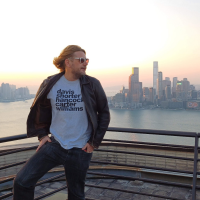Home » Jazz Articles » Record Label Profile » We Jazz Records: Finland's indie label shaking up the gl...
We Jazz Records: Finland's indie label shaking up the global conversation

Courtesy We Jazz
We challenge everyone using the term 'limited edition' to stop using it for the common good.
—Matti Nives, founder
Who do we thank? These indie upstarts may be fuelled in part by the wax-hungry children of the vinyl revival—who have made releasing new physical music (almost) profitable again—but the concurrent streaming revolution, and platforms like Bandcamp, mean that even the most niche, experimental release can reach a global audience with relative ease. And frequently, they do.
That's definitely the story of We Jazz Records, the Helsinki imprint which like so many things almost happened by accident—but could also be chalked up as a foregone conclusion. At its whirling centre is founder Matti Nives, whose unlikely jazz club night in 2013 spawned Helsinki's annual We Jazz Festival, which in turn paved the way for its namesake label, founded three years later. Since then We Jazz Records has launched a bricks-and-mortar record store and a fancy-pants quarterly print magazine, as well as releasing nearly 50 albums, plus dozens of singles and EPs, in the space of just six years.
There's a lot that all these releases have in common—and perhaps more that they don't. Much of the label's output is highly original small group jazz, but there are frequent excursions into electronica and experimental music. There's barely a standard in sight, apart from Lucia Cadotsch's thrilling standards-ish album. Most of the releases come from the Helsinki scene—but more and more don't. There's a Nordic undercurrent to the roster, but also oddities like Frank Zappa's nephew Stanley Jason Zappa. In short, it's a delightful stew of enthusiasm and opportunity—the only constant, perhaps, is the uniformly engaging quality.
Oh, and Nives, the DJ, broadcaster, promoter, producer, writer, editor and art director at the heart of all these projects, whose singular whims, fancies and raves ultimately dictate most of what We Jazz does, and whose growing list of achievements is apparently fuelled only by a greater stockpile of passion. Without dwelling on tired Finnish stereotypes, the 42-year-old is a relentless conversationalist, always ready with one more story before the call is over. Like the time a befuddled Jason Moran stopped by his club night to see blissed-out party people grooving to Jack McDuff records until 4am. Or when Alabaster DePlume invited him to play guitar onstage when the former's band got detained (he declined, citing nerves and lack of practice). The word that keeps coming up though, is "fun"— and that might be the secret of We Jazz's success. Every project, release or harebrained scheme—whether it be a concert in the dark, or on a cross-Helsinki tram populated by unfamiliar musicians picked up by surprise at each stop—was conceived, executed and delivered for the joy of it. And that's something we all need right now.
All About Jazz: Say I've never heard of We Jazz ...
Matti Nives: Ah, an elevator pitch is always the difficult part! I would say We Jazz is a label that seeks out, works with and releases contemporary music that we feel passionate about and that we share a kinship with. Music that's not just another jazz record, but something with a feeling and a personal touch to it.
AAJ: So first things first—how was the We Jazz brand born?
MN: We Jazz originally began with the club nights I hosted with the saxophonist Timo Lassy in 2009—we were playing quite old school stuff, Prestige Records, some of the groovier Blue Note, mainly stuff from the '60s onwards and Latin stuff ... It was rooted in this movement of reviving jazz in Finland which happened largely thanks to Ricky-Tick Records, which was really influential, a label that released Timo Lassy, Five Corners Quintet and Jukka Eskola. A lot of the people I now work with first released their major records on Ricky-Tick and I was also working there on the PR; the whole scene I was a part of came from that. We Jazz needs to be understood as part of this continuum. After Ricky-Tick Records stopped in 2011 it created a void for this kind of label curation thinking in jazz in Finland and created a space for We Jazz to appear some years later as a label.
AAJ: So, from club night, to festival, to label ...
MN: We started the We Jazz Festival 2013, which gave us lots of contacts. I became more and more friendly with lots of the musicians I was working with and booking, helping them with PR and design. At some point it became very clear to me that I had the necessary information and knowledge about what goes into running a label. And at that point people were starting to ask us, "Why don't you start a label? You run a festival, you do all these other things..."
We just wanted to try it out and it really took off. I think people really recognised this passion that I had for releasing records right from the first album and it was maybe something relatable. Things just came together—we had this audience thanks to the festival, social media followers, so the framework was there.
AAJ: Did you imagine in the beginning it would have an international appeal?
MN: I think because of some kind of cultural lack of confidence that many people have in Finland, and I definitely had it and still have it sometimes as a person ... So I was pondering, I love the music, and there's people here who love it, but are people going to be interested in some unknown bands from Finland? I wasn't taking it for granted that it should be outside of Finland, or even the immediate circle of the festival at all, but to my amazement and to educate me about ever thinking that way ever again, people were really interested in the records. I think it got off to a really good start and that gave me the confidence still leading the way today.
AAJ: What was the secret ingredient, if you'll forgive the cliché?
MN: Maybe it's just being passionate about the music. The DIY way is so natural to me that you just try to learn it and see what happens. That uncommercial vibe the label had from the beginning, not really thinking about the cheapest way to make a record, how to make the most money or which artist to release that people will buy ... There's a certain kind of passion I see in all labels that I'm passionate about as a record buyer, and that really translated. And of course I'm not the one to give a comment on the design, but I think many people liked the design ideas that were a bit different.
AAJ: Right, so as art director you've designed or commissioned all the album covers yourself—there's a very distinct yet diverse aesthetic evident. What's been your guiding approach throughout?
MN: I wanted an identity that was very strong, but not too fixed—some labels have a very fixed identity and I wanted to avoid that, an identity that you can always play around with.
AAJ: The label started off profiling primarily Finnish artists. How is that changing as the brand's reach grows?
MN: It's probably about two-thirds Finnish so far, but going forward I see us doing more international artists. I think it's only natural. I still want to represent the Helsinki and Finnish scene—especially now that people follow us outside of Finland, we can find artists new audiences—but to me it's only about the music and in the end it's very logical that there's more coming from outside of Finland than inside as we move forward.
AAJ: Are there many other labels in Finland releasing jazz right now?
MN: There are others—like Eclipse, Flame Jazz and Svarte—it's hard for me to evaluate how we are different from them. But it doesn't really matter to me if the people who pick up a We Jazz record know the label is in Helsinki—as long as they like the music and they are happy with the record. If they want to check out what is happening with the label I'm really grateful and I really love that, but I'm not forcing this Finnish angle into it.
AAJ: You've worked with dozens of artists in a relatively short period of time. How did you discover and build relationships with all these musicians?
MN: There's not any one way. Mostly I get approached and I like that because then I can tell the artist has a real interest in the label and knows what it is about. I don't do master deal bidding wars—if an artist comes to me and says, "I have three labels interested in this album," I tell them, "I'm really pleased for you—hit me up next time if you're looking for something new."
I need to do albums that are specifically right for us, but also there's a connection with the people. I always want to talk before doing an album—I'm not releasing something based on an email pitch, I need to know it works on a personal level. So I usually work with people I know or people that are recommended to me.
AAJ: So what are you looking for from a new prospective release?
MN: Well, I'm looking for a moment of happiness when I listen to the demos, or a deep interest in the idea. I prefer to hear ideas early on. I really love when there's a process that roots itself instead of just saying yes or no to an album that's already finished. It's not about meddling with what the artist is doing.
Many labels nowadays want to have a readymade package from their artists, even with artwork, and we're the opposite of that, and sometimes that's the problem. You might get a really good album idea, but the artist might as well put it out themselves. I don't want us to be just another resource—it's a deep partnership I'm looking for.
There's this duality with labels—some are pretty hands off and just want the artist to do everything, and some are really hands on where they kind of tell their artist what to do, I want to be somewhere in the middle. I want a say in what goes on in my label on a personal level, but I also don't want the artist to do anything they wouldn't want to do.
AAJ: How many unsolicited pitches do you get?
MN: It's very hard to calculate, maybe 150-200 a year ... But it's very rare that an established label would pick up on random pitches just from emails, so I think the new artists should really go out and play live as much as possible and meet the people who run the labels and be as active as possible, to figure out the lay of the land. I'm always happy to talk about that with musicians, but pretty much it always comes from a personal connection of some kind.
AAJ: Financially, has it been ... difficult?
MN: It's definitely not always easy. There's challenges. But when I started it was a period when there was so much cynicism in the field, and that was one reason I finally started the label—I realised it was my job to make it about music. Because when I spoke to labels they were all complaining about CD sales and how little Spotify pays, those were the basic things that came up all the time, and I got the feeling that it might be stressful for the artists to work with labels like that ...
So I said let's see how it goes and try and break even and figure out the business side afterwards. It was only about doing the best possible and most beautiful possible release, and understanding that it might take time to work out how it works financially. We're still on this learning curve and it's super difficult, but it's getting easier and easier all the time.
AAJ: So, what have you learned so far?
MN: We understand more and more about the process each time, which leads to the label doing better and better all the time—and it also reaches more and more people, due to things like this interview! It's a broadening circle of friends who are into this music, some we know, some we don't know. So, yeah, we're still here at album 50, so I think we're doing great! I'm not a rich guy or anything, but I believe there's always a way of making things work financially if you make them work conceptually. I have a strong, strong belief you just need to be ready to endure times that are not easy and be ready to make decisions that are not money based at all, and then people will recognise that eventually ...
Have you seen the Factory Records movie 24 Hour Party People? I don't know how accurate it is, but there's this great scene where Tony Wilson, the label founder, takes out a needle and does a small cut on his arm, and then writes with his own blood, "The artist has the freedom to fuck off." And that's the contract that they have and they frame it on the wall. Even though that seems pretty rude, I think there's some beauty in it.
AAJ: How many records do you typically print?
MN: With new artists we usually print 500 LPs and 500 CDs—the so-called classic "500+500"—with new artists we don't want too much pressure. For others we go up to 3,000 or something like that, but I think our goal for the next year is not to explicitly try and get pressing numbers up, because I also think there's an ecological concern there, so I need to make the right amount of records so that they don't end up in landfill later. And I don't shy away from making reprints.
I'm sometimes a bit picky about words, and I never ever use the words "limited edition," I think it's so overused—of course everything is limited [in numbers], even Michael Jackson's Thriller is limited—but we never mention it, or emphasise it. I'm really tired of hearing that phrase. It's such a joke to me—I once saw a Record Store Day sticker that said "limited to 25,000 copies"—I think the whole thing is very tired. Music listening shouldn't be so much about consumption. When you get an album you should be really happy to listen to it—I really deep-dive into all the albums I buy, check out the cover art and the inserts, and spend time with the music, listen and share it with friends and DJ it—to me that process is kind of sacred, living with the music. And to me it doesn't have anything to do with limited editions or how many were pressed.
Records should be available as much as possible—we challenge everyone using the term limited edition to stop using it for the common good.
AAJ: Speaking of record collecting—We Jazz now has a shop ...
MN: Right! I'll try and make this story short—in July 2019, I got this email from Geneva, Switzerland, that said, "Our father died at 92 years old, he had a record collection of 11,000 records—would you be interested in buying those?." And that mail was so random because we didn't have a shop! They had just searched and found We Jazz Records and sent us this message through Bandcamp. I thought about it for a second and I thought there's no harm in saying yes. We had this feeling it's fun to sell records—it's one of those things that when you have a pint with your friend, "Hey, wouldn't it be cool to have a record shop one day?"
I think our record shop is one of those speciality destinations that people are happy to travel to from other parts of the world when they visit Helsinki— record nerds like me will put it in Google Maps and take the tram—that's something that was missing, this connection to other scenes through the shop. So much happens there—we meet people there, champion other labels we love, inherit whole collections and study the music—I think the shop has changed my passion for vinyl records, and it's only getting stronger and stronger.
AAJ: Last week, I was that geek who took the tram up there, and that's probably why we're talking now. I noticed in the racks you had separate sections for two of my favourite labels, Analog Africa and International Anthem ...
MN: It's funny, I've just spent four days here in Lisbon hanging with some of the guys from International Anthem—we did a panel together at the Jazz em Agosto festival—and I consider them some of my closest friends in music. I love those guys, their output is amazing. International Anthem is one of the labels I look up to that really inspires me— they're probably the closest label outside of Helsinki to us. But there are tons of really great labels out there—Hive Mind from Brighton [UK], comes to mind, and Analog Africa is one of those [labels], definitely. We're pretty close to Edition Records. We have good communication with ECM Records, even though it is a bit more formal as they're a bit bigger and have a different way of operating.
AAJ: How did the We Jazz magazine come about?
MN: I can see a pattern here when I'm talking to you—in a similar way, the magazine came from a need in the scene to have a bigger representation for the music. I'm really passionate about graphic design and I've really thought that there should be more magazines dealing with all the exciting music coming out all the time, and the legacy of the old music that people should check out ... and sometimes the design element isn't there. I wanted to have a format which allowed for some graphic design innovations and felt like something you want to keep and not throw away next time you take away the paper trash.
We took a bit of a risk and printed 1,000 copies of the first issue, and to my surprise ... it sold out in two weeks. It took on like bonfire. I am so happy, it has been one of the true highlights of the whole We Jazz thing ... how many people we are meeting through the magazine—new writers, artists, illustrators, designers—it's so much fun to do and I look forward to planning every issue. For me the magazine and the records are a way of reaching people, and also documenting what's happening at this moment of time in music, and maybe some stuff that was left unsaid about the music that happened before ... and meeting people through that. I'm so grateful for this circle of friends that is ever expanding. To be able to share people's experiences from different parts of the world— that exchange is so important and it can happen through music, magazines and events. I try to keep it as open as possible.
AAJ: So, before we go, how did you even get into jazz?
MN: I was interested in jazz because I listened to hip-hop early on, and I noticed there was often this cool music in tracks by A Tribe Called Quest and Black Star—and then I discovered these were samples of actual tracks, and then I listened to those records and discovered they were really nice, and thought, wow, I should actually listen to those as well. So I started going to the library—that was the pre-Spotify way—and I tried to pull out CDs that looked interesting and I thought might be jazz, some of which I didn't understand at all, such as John Coltrane's Blue Train. I was like, what the fuck, these guys all play a nice melody, and then they all solo-off for 11 minutes, how can you listen to this? But later on I understood in every music genre in the world there's vocabulary, it's like learning a new language, and jazz was just a language I needed to pay attention to, to allow myself to be able to understand what the music intends to do, not in any academic terms, but emotionally. And that's what I see in so many listeners now. I'm really respectful of and humble about that process. There's so many languages to learn
AAJ: So what was the first jazz LP you actually owned?
MN: Miles Davis's Kind of Blue [Columbia, 1959]—and I accidentally played it at 45rpm the first time around! I thought this was one of those quiet jazz classics, it was all happening so fast, I didn't understand what was happening. I'm so embarrassed to admit it now because it sounds so ridiculous.
The first jazz album I really got was Somethin' Else [Blue Note, 1958] by Cannonball Adderley, where Miles also plays—I was listening to the track "Autumn Leaves" and it happened to be an autumn day and it spoke to me. It was in my CD Walkman so I didn't even know the track's name, it was just perfect for this beautiful autumn day, and then the trumpet comes and I was like, this sounds familiar, maybe it's that guy I know, Miles Davis? Could I understand this much? So when I got home I immediately checked the sleeve, oh my god—it is that guy. It all started to make sense, there's these five musicians, they play together, they play this tune, then they all solo and tell their own personal stories, and the music works as a whole thanks to all of these elements—the musicians' abilities and visions and the composition—that kind of just clicked.
AAJ: Last but not least—you've now become something of an ambassador for the scene now. So is there anything that makes Finnish jazz specifically Finnish?
MN: Well I don't know if it is different. Historically you can find some leanings to folk traditions there. But any scene is more about connections, so the Finnish jazz sound is a broad thing and there's not any one sound.
One thing is the level of musicianship is quite high compared to some other scenes—these people who call themselves musicians, they can really play, and that comes down to maybe the culture and respecting that craftsmanship attitude. In Finland, whatever you do, people expect you to really master that because it's in the culture not to do anything halfheartedly. Traditionally, it's kind of considered a person's honour. And that relates me back to this label and everything—one of the key things for me to understand was that it's not a hindrance to be in Helsinki and do these things. That people from outside of Finland would be interested. I needed to wrap my brain around that first, to be able to be where we are today as an international actor in that field. I think that tells you a little bit about the attitude in Finland.
Listening guide: We Jazz in 10 records
The one that started it all
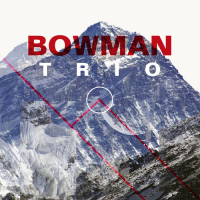 Bowman Trio
Bowman TrioBowman Trio
2016
While the We Jazz brand had dabbled in cassettes, 10-inches and DVDs, the mythical WJLP01 catalogue number went to this lazily loping live recording captured at a café during the 2015 We Jazz festival. In truth, the punkish, loft-ish, trumpet-fronted Bowman Trio (named, not after a leader, but an invented protagonist) sound far better on their 2019 follow-up Persistence — technically and sonically—but this was the fanciful favour of a one-off release that kickstarted the whole thing (while deliberately DIY, verite-esque live documents would be a recurring early release theme).
The last hurrah on an underground sensation?
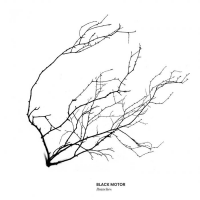 Black Motor
Black MotorBranches
2017
Tampere's rabble-rousing experimental trio Black Motor have been baffling brows and blazing synapses for 15-plus years now, but have arguably never sounded better than this surprisingly subtle trio set, which dials down the bandstand indulgences for a different kind of intensity, both beautiful and brooding ("introspective fire music," according to the label). Signing them may have been an early statement of intent for We Jazz—but with no follow-up five years on, we hope there's more shoots still to come.
"Punk-jazz" done right
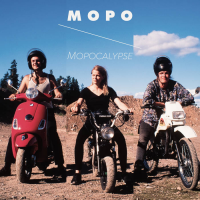 Mopo
MopoMopocalypse
2018
What is it about We Jazz and horn-led trios? Or is it a Finnish thing? Whatever, this rollicking musical ride sounds like no other trio on earth, part adrenaline-fuelled freak-out, part chin-stroking, made-up movie soundtrack. For all the "punk" posturing, these sly, sassy sax-bass-drums arrangements intertwine a strain of humour amid the propulsive, folk-funk-fuelled strut. The apparently inactive trio were locally famous for playing 24 concerts in 24 hours at the 2014 We Jazz Festival, and featured a certain Linda Fredriksson on sax.
The international coup
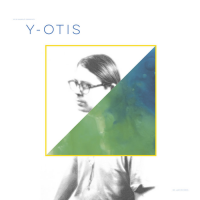 Otis Sandsjö
Otis SandsjöY-Otis
2018
Moving beyond the immediacy of its Helsinki friend and fan base, We Jazz made a strategic powerplay in signing Swedish saxophonist Otis Sandsjö, whose genre-melding quartet chop-ups take cues from hip-hop and electronica, while remaining both free and focused. Described fairly fittingly as "liquid jazz," the brave beginning also put the label in the orbit of the formidable bassist Petter Eldh, while the release sports Nives' personal favourite cover art (at a reluctant push).
The solo bass wig-out
 Ville Herrala
Ville HerralaPu:
2020
Albums of unaccompanied bass solos are understandably as rare as they are divisive. So the sheer audacity of the relatively unknown Ville Herrala choosing the format for a debut recording is only less astounding than the fact he's created something of such beauty. Maybe it's the size that matters—composed of 14 short, intense improvised vignettes, of scattered moods and modes, and sequenced as opposing sonic sketches, the 33-minute set speeds by as a meditative mind-fuck.
Introducing tomorrow's vocal star today
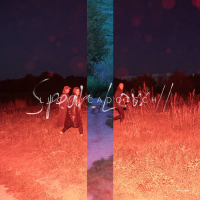 Lucia Cadotsch
Lucia CadotschSpeak Low II
2020
Swiss singer Lucia Cadotsch achieved something quite wonderful with her debut album Speak Low (2016, Yellowbird), casting tired standards ("Willow Weep for Me," "Moon River" ...) in a beguilingly minimalist pairing of just sax and bass—courtesy of Sandsjö and Eldh!—that unearthed hidden harmonic and emotional depth where least expected. Featuring guests Kit Downes on Hammond organ and Lucy Railton on cello, the follow-up for We Jazz was better still, unleashing a major vocal talent on the world.
An epic duo summit
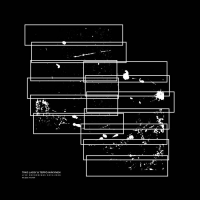 Timo Lassy & Teppo Mäkynen
Timo Lassy & Teppo MäkynenLive Recordings 2019-2020
2021
Saxophonist Timo Lassy is a scene stalwart and long-time part of the We Jazz family, who started off sharing the decks with Nives at the pair's first branded club nights. Naturally he's been documented along the way, and while some of his work may appear more rooted in tradition than the label's youth-leaning roster, this live set stretches into blissfully freer territory, cherry picking moments from series of live duo summits with drummer Teppo Mäkynen—nuanced, intuitive conversational exchanges born from the fruits of a long-running telepathic synergy.
A supersonic supergroup
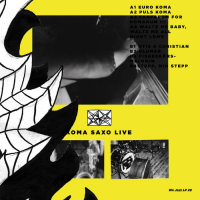 Koma Saxo
Koma SaxoLive
2021
When the Swedish bassist Petter Eldh was invited to present the studio trickery of his Koma Saxo project at the 2019 We Jazz Festival, he assembled a new quintet line-up and the tapes were set rolling. Captured raw with zero post-production, this searing eight-song suite is a riot of intensity—three horns blowing furiously over a frantic thwacking rhythm section—collective improvisation at once cathartic and life-affirming. The 2022 follow-up Koma West introduces a vocal-led ambient sonic as different as it is engaging, but the sheer bottled adrenaline of this live document feels a better encapsulation of the We Jazz story
The indie-jazz hipster
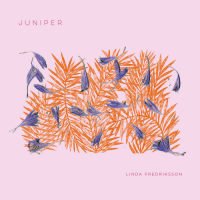 Linda Fredricksson
Linda FredrickssonJuniper
2022
An early contender for most-compelling jazz solo debut of the year? Why not—Juniper is a deeply personal, meandering meditative work from the Finnish saxophonist (of Mopo fame). The stark material was apparently written solo on acoustic guitar and voice, but conjured here as ambient instrumental improv for the Spotify age: loosely but intricately constructed and self-produced, Fredricksson's sound collages weave studio band moodscapes with electronics and private iPhone recordings to paint a deeply complex interior monologue. Hear to believe. Oh, and it won a gong for Jazz Album of the Year from Finland's Emma Gaala. So there.
Not just another Nordic piano trio
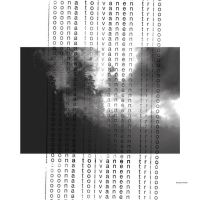 Joona Toivanen Trio
Joona Toivanen TrioBoth Only
2022
Sure, it wouldn't be a Nordic label without a traditional acoustic piano trio sketching sublime snow-stained soliloquies, which we all like to imagine evoke the harsh ravages of nature and the icy lonesome landscapes of holiday greeting cards. Well, the Joona Toivanen Trio—of bassist Tapani Toivanen and drummer Olavi Louhivuori (also featured on Juniper —what a small scene!) both manage to build on these themes and subvert them, with this warm introspective cocoon of shimmering, percussive, moody loveliness. The ideal entry point for ECM fans everywhere.
Tags
Record Label Profile
Linda Fredriksson
Rob Garratt
Finland
Blue Note Records
Impulse!
Lucia' Cadotsch
Frank Zappa
Stanley J. Zappa
jason moran
Jack MucDuff
Alabaster DePlume
Timo Lassy
Prestige Records
Ricky-Tick Records
Analog Africa
International Anthem
Edition Records
ECM Records
John Coltrane
Miles Davis
Cannonball Adderly
Otis Sandsjö
Petter Eldh
Lucy Railton
Koma Saxo
Kit Downes
PREVIOUS / NEXT
Support All About Jazz
 All About Jazz has been a pillar of jazz since 1995, championing it as an art form and, more importantly, supporting the musicians who make it. Our enduring commitment has made "AAJ" one of the most culturally important websites of its kind, read by hundreds of thousands of fans, musicians and industry figures every month.
All About Jazz has been a pillar of jazz since 1995, championing it as an art form and, more importantly, supporting the musicians who make it. Our enduring commitment has made "AAJ" one of the most culturally important websites of its kind, read by hundreds of thousands of fans, musicians and industry figures every month.

